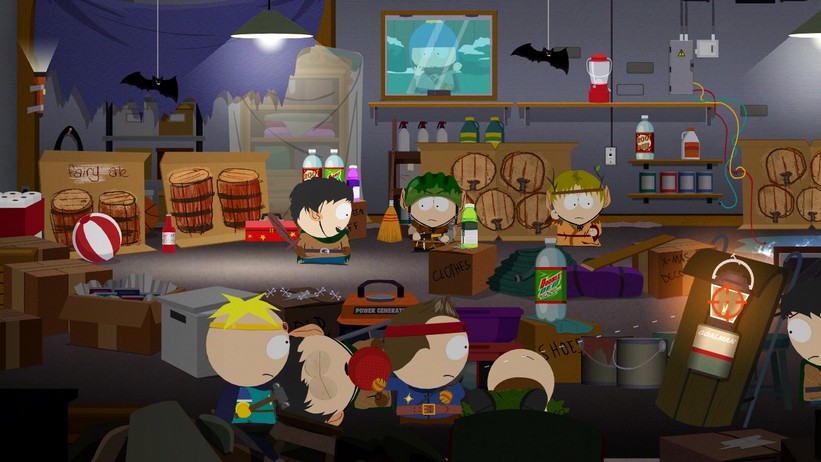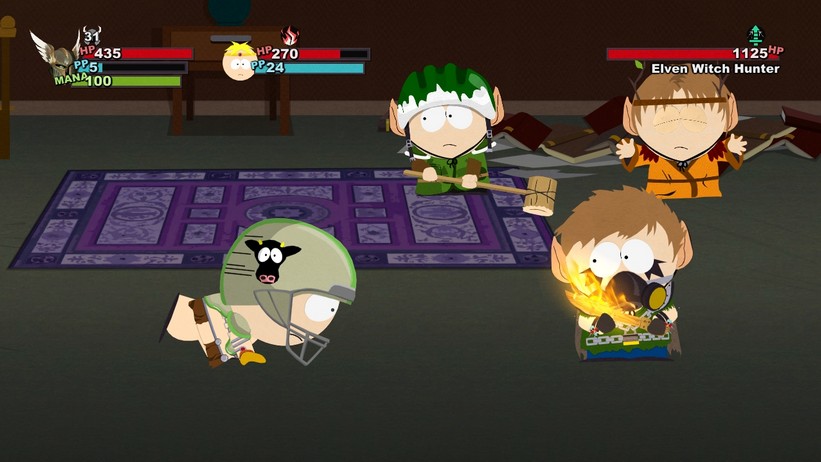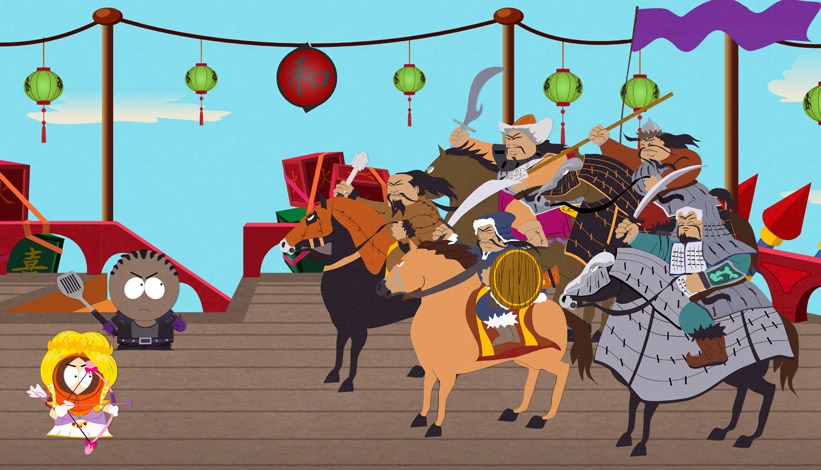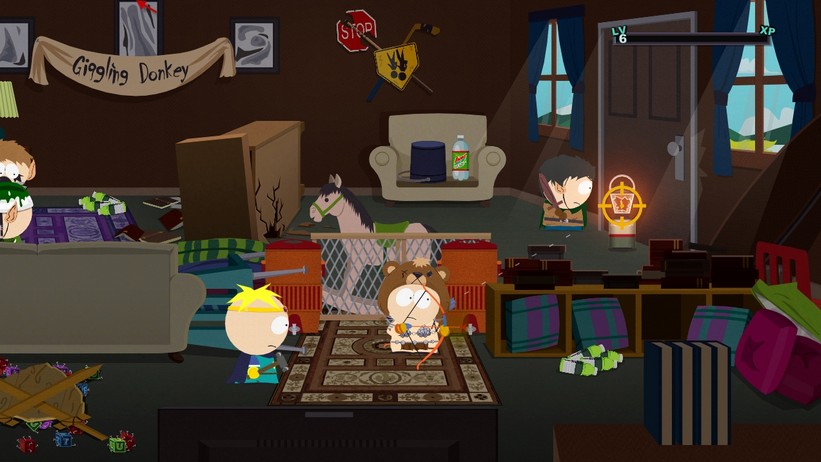
South Park: The Stick of Truth review
Let’s get one thing about South Park: The Stick of Truth out of the way right off the bat. Stick of Truth is the best South Park game. Period. It probably doesn’t help that South Park has never had good luck with video games, but it’s still undeniable that Comedy Central’s long running flagship series finally has a recommendable adaptation. As a South Park game, it does its job, and is even acceptable in terms of gameplay, but it lags behind a bit on the RPG front.
The game begins with a character customization process not unlike what you’d find on some Flash websites. Needless to say, it’s not particularly in-depth, but it’s also not particularly a problem. You play as the new kid in town, eventually known as Sir Douchebag. The local kids have engaged in a neighborhood wide roleplaying game, and you soon find yourself involved, climbing the ranks amidst a never ending war between the humans and the elves. Both factions vie for possession of the Stick of Truth, which grants its wielder control of the universe. The kids of South Park take the game pretty seriously, enough that your actions in combat not only affect those playing the game, but outsiders as well, such as hall monitors, hobos, and a variety of wild animals.
Stick of Truth stays very true to the formula of the TV show. Visually it looks exactly like the show, from the construction paper textures, down to the weebly wobbly walking animations. Obsidian’s efforts impressed South Park Studios so much they were granted access to 15 years worth of Maya source material, creating an authentic atmosphere. Its writing is also what you would expect from the show, direct from the show’s writing staff themselves, meaning you should expect quite a lot of low brow humor. If the thought of using farting to defeat your enemies, getting violently probed by aliens (in the US version), or fighting aborted zombie Nazi fetuses offends you, then stop reading now – this game’s not for you.
The town of South Park itself is open for you to explore. Occasional obstacles block your way, but throughout the game you’ll learn new abilities that not only help you in combat, but also allow you to overcome said obstacles. Most of its citizens can talk to you and even be friends with you on Facebook (yes, it’s straight-up called Facebook), which also acts as the in-game menu. South Park fans will enjoy visiting famous locations like Stark’s Pond, Jimbo’s gun store, and Stan’s house. Exploration is rewarded with plenty of items, as well as useless collectables like a set of Chinpokomon toys. You can also get buddies to tag along with you, like Butters, Kenny and Jimmy, who can do rarely necessary overworld actions, and assist you in battle. When it comes to staying true to South Park’s roots, Stick of Truth does very well, but the RPG aspects are hit and miss.
At first, Stick of Truth’s combat mechanics seem complex, but it’s really not the case. Combat is turn-based – usually you get a turn, then your buddy gets a turn, then all your enemies each get a turn. Most actions require timing to pull off effectively, much like Super Mario RPG, surprisingly enough. Defending also utilizes timing, just press the A button (X for Playstation, I assume) when an icon appears under your characters and you’ll take reduced damage. You can use one item per turn along with an attack, and even summon the likes of Mr. Hanky to aid you in battle.
Combat actions include attacking with either a melee or ranged weapon, using power points (or PP) to use a special move, or using mana to attack with fart-based magic. Enemies can set themselves to reflecting or riposte positions, allowing them to ignore all regular damage and redirect it to you. You can’t skip turns, however, meaning you might have to just take the damage if you can’t do anything else in these situations.
As far as status effects go, Stick of Truth actually has a fairly deep variety, like what you’d expect in a more complex RPG. Bleeding and burning do damage over time, freezing slows down your enemies, and you can even “gross out” your opponent, keeping them from healing themselves, among other effects. All through the game you’ll find loot everywhere that gives you bonuses and items called “strap-ons” to enhance said equipment with special effects provided they have slots available for them.
The unfortunate side of all this is that optimizing yourself to work well in a synergistic way with one or two of these effects will put you on the easy path for the rest of the game. I had mostly all my enemies drenched in blood by turn one, then proceeded to do massive damage by either using attacks that get bonuses on bleeding enemies, or by simply stunning them and waiting. At only about a third through the game, battles became rudimentary, with the exception of a few boss battles. Even just attacking was enough to get me by in most situations. If you’re an RPG fan, you won’t find as much strategic depth as you would in other turn-based RPGs, but it was probably designed to be a pushover to appeal to the general South Park audience. In that regard, I think it does well enough. As an experienced RPGer, I found it too easy to exploit, and therefore too easy to beat.
The last major flaw with the game as an RPG is that it’s relatively short. I got through the game doing most of the side quests in around 10 hours. Again, for a mainstream game it’s not so bad, and Stick of Truth does feel like it has a decent amount of content packed into it, but it’s fair to expect it to last at least twice as long as it does. I do want to point out that there’s nothing about the game that’s fundamentally problematic, it’s just distinctly average.
Perhaps my biggest issue with the game, RPG elements aside, is the game’s lack of tutorials on certain things. It trains you well enough in the ways of combat, and sometimes simple text boxes that get the job done, but leaves you high and dry on other aspects. Upgrading your character’s abilities and perks is never explained and left to the player to discover on their own, within the submenus of Facebook. Learning a couple fart techniques was especially bemusing, like the Squeaky Sneaker. The game would demonstrate by showing the left stick twiddling around, when really you’re just supposed to hold it left to proceed. The twiddling was meant to show you could move the fart anywhere you wanted, but in this situation it didn’t really help things.
In a nutshell, South Park: The Stick of Truth is a must-buy for South Park fans provided you can handle the RPG elements. I don’t think you would have a problem with it, because it’s just not a very deep game, despite showing signs of otherwise. Hell, I might even consider it entry-level and it could very well be a decent gateway game to the RPG genre. RPGers that aren’t South Park fans (possibly Obsidian fans) may want to pass it up.
3 out of 5
Categories: Reviews





0 Comments
This post has been left all alone with no comments. Don't leave it lonesome - give it some company with a comment.